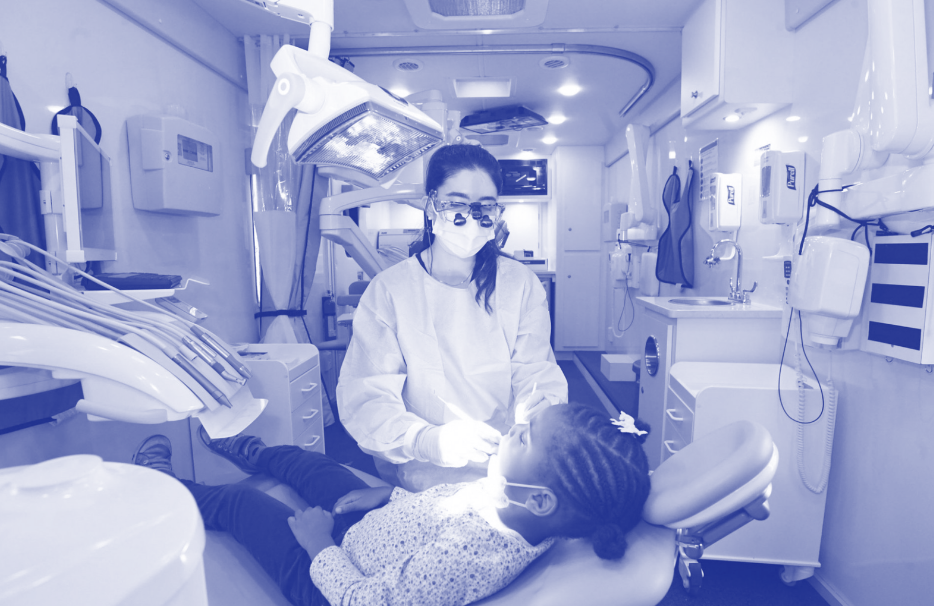What is Mobile Dentistry?
By: Jaden Cai
Introduction
Most are still unable to access dental care. Geographic isolation, low income, poor access to transportation, and insufficient providers are just a few reasons. Rural populations, minority groups, and low-income families are usually disproportionately affected. Mobile dentistry is one of the best options—bringing the dental clinic to where it's needed. It's not just convenience; it's equity. Mobile dentistry provides an option to provide care that's otherwise delayed or denied in the standard environment. With oral health still closely linked to overall health, these services are more important than ever.
Understanding Mobile Dentistry
Mobile dentistry utilizes specially equipped vans, trailers, or portable equipment to provide dental care beyond standard office environments. Procedures can include cleanings, exams, sealants, fluoride treatments, fillings, and even extractions. These dental clinics are visited by qualified dental care professionals who are able to visit schools, community centers, nursing homes, and remote villages. Teledentistry is integrated by most programs to provide consultation and follow-up care. A few incorporate oral health education while visiting. The main aim is to remove the logistic and financial barriers that make it impossible for a person to go to a dentist in the first place.
Benefits of Mobile Dentistry
Increased Access – Reaches rural or underserved patients who would not otherwise have a local dentist.
Cost-Effective – Saves overhead on operating a permanent facility. Some programs refund patient savings.
Flexibility – Can be modified to serve several populations, including school children, seniors, veterans, and the uninsured.
Preventive Emphasis – Provides early diagnosis of diseases and prevents more complex oral health problems down the road.
Mobile units also allow dental personnel to build trust among a population. For example, regular school visits can familiarize children with dental care at an early age. In underserved populations, where patients have had little or no exposure to oral health services, building that trust is essential. Trust creates better health habits and long-term attachment to health care providers.
Challenges and Considerations
While promising, mobile dentistry is not a simple operation to conduct. It is difficult to satisfy state licensing standards, which vary and are a source of delay or prohibition across state lines. Infection control procedures are also strict and demand that portable equipment meet safety standards. Patient scheduling is also an issue—some mobile clinics see hundreds of people within a short time frame, straining personnel and resources thin. Recordkeeping also increases the complexity, especially when trying to do business with public schools or health providers. The insurance billing systems and privacy standards also have to be compatible and secure. Money is always a problem. Most mobile dental operations rely on grants, donations, or public funds, which isn't always available or easy to renew.
Real-World Impact
There are many success stories that show what mobile dentistry is capable of. In California, dental vans go into farmworker communities where children and adults never set foot in a dentist's office for years. In Alabama and Mississippi, mobile clinics have brought services into counties without a practicing dentist at all. Some large-city programs provide oral care for homeless individuals, veterans, and refugees. In such cases, mobile dentistry wasn't just filling a gap—it created a connection to the healthcare system where none existed before. Most of the patients treated within mobile units then receive follow-up, further demonstrating the importance of these services as a start towards long-term health.
Conclusion
Mobile dentistry brings care directly to individuals who are likely to be outside the system. It takes away pain, prevents disease, and improves overall well-being. It can also relieve crowding in emergency rooms, where untreated dental issues too often end up. It's not a substitute for stable dental homes, but it's the necessary step toward health equity. As the need for community-based solutions expands, mobile dentistry is a clear, proven path to increase access and narrow the gap. It means that improving the oral health of residents does not always equate to building more facilities—it sometimes just involves taking care of them.
References
Beazoglou, T., Bailit, H., Maule, L., & Zarkowski, P. (2011). Dental care for the underserved: Alternative delivery models. Journal of the American College of Dentists, 78(4), 46–52. https://www.tandfonline.com/doi/full/10.1080/19424396.2024.2320945
British Dental Journal. (2024, April 22). New mobile dental service for under-served communities in Hampshire and Isle of Wight. Nature. https://www.nature.com/articles/s41415-024-7203-4
Chandrashekar, B. R., Nair, M. A., & Singla, N. (2014). Reach the unreached – A systematic review on mobile dental units. Journal of Clinical and Diagnostic Research, 8(12), ZE05–ZE09. https://www.ncbi.nlm.nih.gov/pmc/articles/PMC4190815/
Jain, A., Sequeira, P. S., & Jain, J. (2024). Mobile dental clinic for oral health services to underserved rural areas. Journal of Family Medicine and Primary Care, 13(1), 35–40. https://www.ncbi.nlm.nih.gov/pmc/articles/PMC10895535/
Oral Health Workforce Research Center. (2017). An assessment of mobile and portable dentistry programs to improve population oral health. Center for Health Workforce Studies, University at Albany. https://www.chwsny.org/wp-content/uploads/2017/09/OHWRC_Mobile_and_Portable_Dentistry_Programs_2017-1.pdf
Spear Education. (2024, March). How mobile dentistry is closing care barriers (and how you can help). Spear Review. https://www.speareducation.com/spear-review/2024/03/how-mobile-dentistry-is-closing-care-barriers

